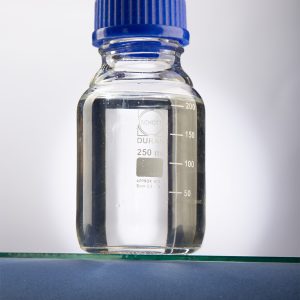What is antiscalant?
What is anti-scalant? Anti-scalant are anti-sediment substances that are injected into RO desalination systems to clean water treatment systems and to prevent the formation of industrial membrane deposits.
Raw water contains solutes and mineral salts, which are deposited on the membrane while passing through the membrane. These sediments gradually clog the pores of the membrane membrane, which reduces the efficiency of the water coming out of the RO desalination system.
Antiscalant is a solution that is used to reduce the effects of deposits such as calcium carbonate (CaCO₃), calcium sulfate (CaSO₄), barium sulfate (BaSO₄) and strontium sulfate (SrSO₄) that are formed on the polyamide membrane or the membrane of the desalination device. is used
The possibility of formation of silica deposits (Sio2) is lower than other deposits.
The necessity of using antifouling materials
The water entering the reverse osmosis machine contains soluble salts of calcium, magnesium and other solutes, which are deposited on the reverse osmosis membrane as a result of passing through the membranes of the reverse osmosis machine.
Sedimentation on the surface of industrial membranes reduces the efficiency of RO system membranes in removing dissolved solids. Antifouling materials are used to remove the sediments formed on the membranes.
Failure to use antiscalant in the industrial reverse osmosis system causes the following problems:
Reduction of production efficiency and increase of output TDS
Reducing the amount of output flow
Opening of pores and tearing of the membrane due to the accumulation of sediments
Antiscalant performance
Antiscalants in industrial desalination devices join the pollutants in the water and prevent sediments from sticking to the membrane surface.
This material passes pollutants and water solutions through the membrane and removes these materials from the RO system along with the post-sap.
Failure to use anti-scalant will cause serious damage to the membranes of the RO device and will decrease the output flow and also increase the TDS of the water. Therefore, it is necessary to use it in the RO reverse osmosis device to increase the life of the membrane and also to increase the output flow efficiency.
The performance of antifouling materials in RO desalination system membranes is such that, by affecting the factors that cause sedimentation, it delays the formation of sediments during the time it passes through the membrane membrane, and thus prevents the formation of sediments on the surface. Membrane prevents.
How to inject antiscalant
The anti-injection site in industrial desalination systems is the RO reverse osmosis method after the sand and carbon filter and before the micron filter. In this case, with the effect of antiscalant, less sediment is created on the micron filter.
Disadvantages of using low-quality anti-scalant
Increasing the number of six members
Reducing the lifespan of membranes
Early membrane replacement
Reduction of production capacity
Increasing the pressure of the floor pump and reducing its lifespan
Antiscalant injection dose
The amount of anti-injection dose depends on the following factors.
Analysis of incoming raw water
The amount of input current
The amount of TDS of the incoming water
temperature
pH
Taking into account the above and dedicated software such as COROLA.T, etc. provided by the manufacturer, it is possible to determine the exact amounts of the antiscalant injection dose.
Anti-scalant compounds
The chemical formula of antiscalants is different based on their type, which are acrylic acid polymers or organophosphates.
Antiscalants, based on the basis of their constituents, control the formation of calcium carbonate deposits in positive LSI and S&DSI conditions and control the formation of other deposits (sulfates, fluoride, silica, etc.) in conditions of SR above 100% on reverse osmosis membranes. are in charge
Polymer based antiscalant
This type of antiscalant has a high molecular weight and has the power to descale all types of sediments, including carbonate and sulfate sediments.
Sediment control materials based on polymer materials have a higher power in controlling deposits compared to antiscalants based on phosphate materials.
Antiscalant test
Sediment formation occurs in many water treatment systems. And it causes blockage of pipes and equipment, unexpected breakdowns and equipment wear and damage to the industry sector. When the fouling process occurs in the system, it is very important to identify the fouling type and prevent its re-formation.
To determine the effectiveness of antiscalant on sediments. It consists of a series of tests that can be done:
Testing the formation of sediments without the use of antiscalant
Antiscalant test in different doses to control deposits
Analysis of incoming water and sediments formed against all types of antiscalants
What does the antiscalant laboratory test include?
In the first step, to test the antiscalant, you can check the pH, density, and color of the antiscalant with its data sheet. In the next step, we should test the efficiency and effectiveness of antiscalant on sediment control. The antiscalant laboratory test is a simulation of the sedimentation process in a laboratory environment and on a pilot scale. For this purpose, we test the desired water sample in the same conditions as the water treatment plant for the effectiveness of the antiscalant.
They test the effectiveness and efficiency of antiscalant in the formation of sediments in 4 stages:
Sediment control
chelation or separation
Dispersion of sediments
Remediation of sediments





